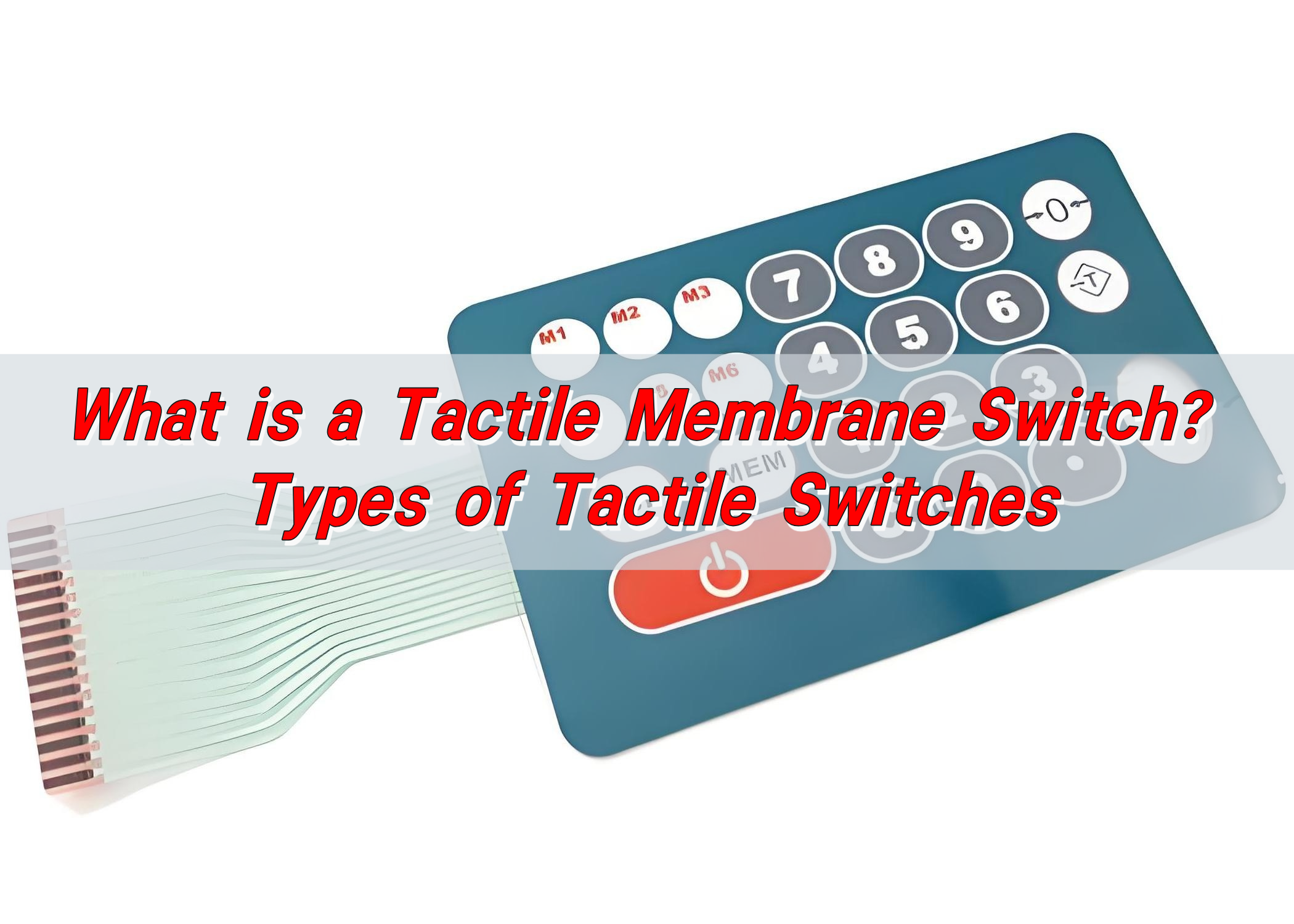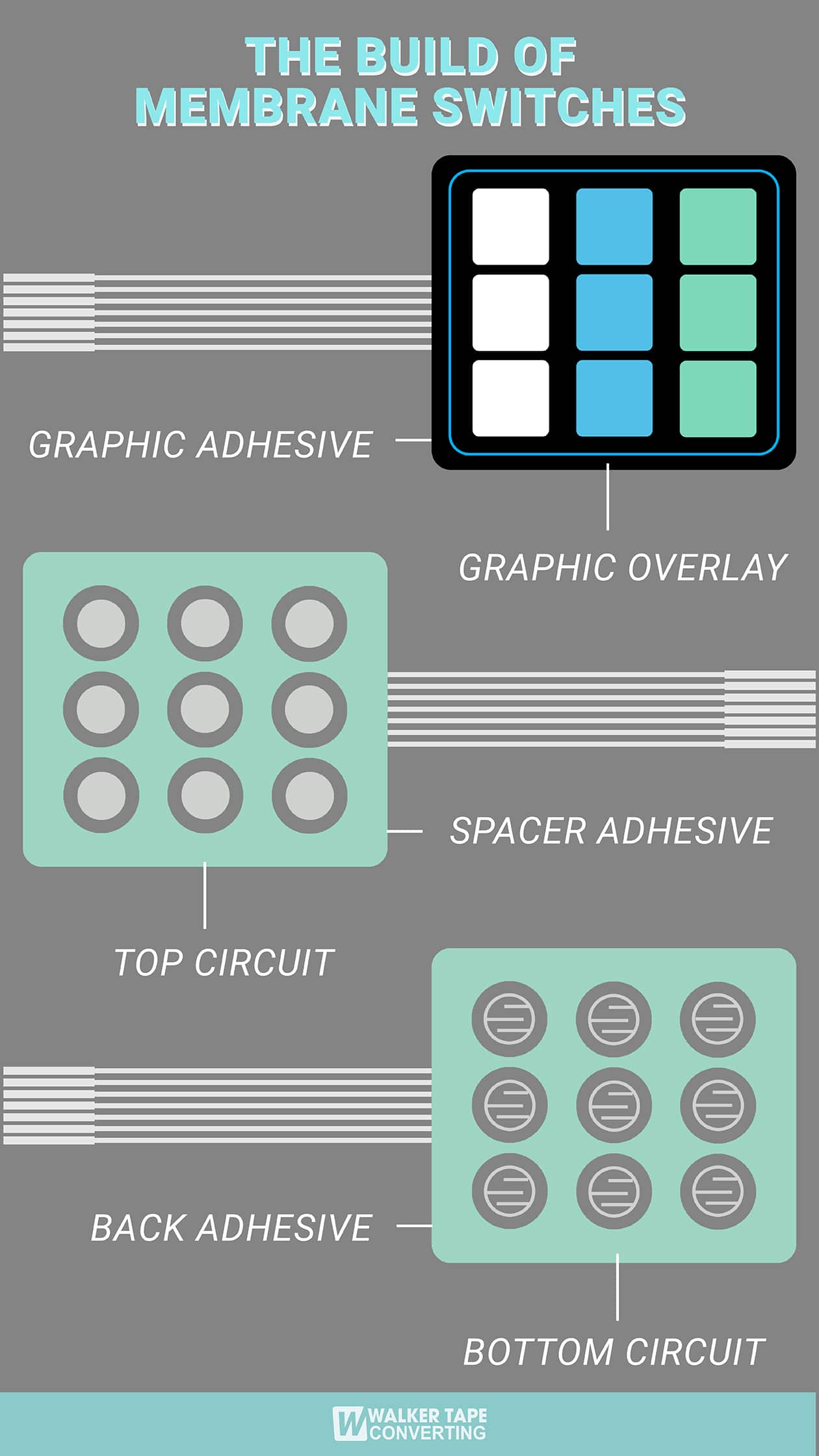All Concerning Membrane Switch: A Comprehensive Overview for Beginners
Membrane layer switches are essential components in modern electronics, providing a special interface for individual communication - membrane switch. Their layered building and construction, consisting of overlays and conductive traces, supplies capability and sturdiness. Unlike typical mechanical buttons, membrane layer switches provide a smooth style and adjustable alternatives. Comprehending their essential attributes and benefits can transform item design. The complexities of their application and layout considerations necessitate further expedition.
What Is a Membrane Switch over?
A membrane layer switch is a kind of electrical switch that includes a flexible membrane layer layered over a printed circuit card. This layout permits a sleek and compact interface, usually utilized in different digital tools. Membrane switches are commonly discovered in consumer appliances, medical devices, and industrial machinery due to their longevity and resistance to environmental factors.The building commonly consists of several layers, such as visuals overlays and sticky backing, which supply tactile feedback and secure the circuitry underneath. The operation of a membrane switch is started when pressure is used to the surface, completing an electrical circuit.These switches are valued for their adaptability, making it possible for personalized designs and printed graphics that accommodate details individual interfaces. Their low-profile nature decreases space needs, making them ideal for applications where conventional buttons may not fit. In general, membrane layer switches supply a aesthetic and useful remedy for contemporary digital gadgets.
Trick Components of Membrane Switches
Membrane layer switches over comprise a number of essential elements that add to their performance and efficiency. The leading layer, known as the overlay, offers the interface and is commonly printed with graphics or symbols. Below the overlay lies a spacer layer, which separates the conductive components and protects against unintentional activation. The next crucial part is the graphic layer, which enhances looks and assures the longevity of the design.Conductive traces, typically made from materials like silver or carbon, are printed on the circuit layer. When pressure is related to the overlay, these traces enter contact, finishing the circuit. In addition, a backing layer provides structural assistance and can be made from materials such as polyester or polycarbonate. Together, these parts produce a reliable, user-friendly interface appropriate for various applications, from family devices to commercial equipment. Recognizing these elements is vital for any person interested in membrane button innovation.
Exactly How Membrane Layer Changes Work
Comprehending exactly how membrane switches feature is important for valuing their extensive use in various devices. A membrane layer button operates via a collection of layers, including a visuals overlay, spacer, and a circuit layer. When pressure is related to the overlay, it presses the spacer layer, allowing the circuit layer to make call and complete an electric circuit. This action sends out a signal to the gadget, prompting a response, such as turning on a light or turning on a function.Membrane switches can be made with different attributes, consisting of responsive feedback, backlighting, and custom-made graphics, boosting user interaction. Their building permits a closed design, protecting the inner components from dirt, dampness, and pollutants. This toughness makes them ideal for diverse applications, from customer electronic devices to commercial devices. In general, the simplicity and performance of membrane switches add to their appeal in modern technology.
Advantages of Membrane Layer Switches Mechanical Switches
While mechanical buttons have actually long been a staple in lots of devices, membrane layer changes deal unique benefits that make them increasingly appealing. One substantial benefit is their slim profile, permitting even more compact layouts and higher versatility in product development. In addition, membrane changes attribute an uniform surface, which boosts visual charm and simplifies cleaning, making them suitable for settings where health is critical.Another benefit is their resistance to dust and dampness. Unlike mechanical switches, which can be compromised by environmental elements, membrane layer switches provide a closed user interface that safeguards versus contaminants - membrane switch. Moreover, membrane layer buttons commonly have a longer life expectancy because of fewer relocating components, resulting in enhanced durability and reliability.Cost-effectiveness is also a noteworthy benefit, as membrane switches can be produced in bulk with lower manufacturing costs. These aspects combine to place membrane layer switches as a useful option to typical mechanical options in numerous applications
Usual Applications of Membrane Layer Switches
Membrane layer buttons are commonly utilized in different industries, especially in consumer electronics and commercial control panels. In customer gadgets, they provide a smooth, user-friendly interface, while in industrial settings, they improve toughness and capability. Comprehending these applications highlights the flexibility and usefulness of membrane buttons in contemporary technology.
Customer Electronic Devices Instruments
As customer electronics remain to progress, membrane switches have come to be a popular option for a selection of devices as a result of their adaptability and streamlined layout. These buttons are typically discovered in mobile phones, tablets, and remotes, where space is restricted and looks matter. Their low profile and personalized styles enable suppliers to produce straightforward interfaces that improve the overall user experience. In addition, membrane layer switches are typically utilized in appliances such as microwaves and coffee manufacturers, giving instinctive control choices while withstanding wetness and dirt. The durability and dependability of membrane switches over make them appropriate for everyday customer items, guaranteeing durability basics and constant performance. In general, their assimilation in customer electronics mirrors a blend of capability and modern style.
Industrial Control Panels
The applications of membrane changes prolong past customer electronic devices, discovering significant usage in commercial control panels. These buttons are preferred for their toughness and resistance to harsh settings, making them optimal for manufacturing and procedure control setups. They give a trusted user interface for drivers to regulate equipment, monitor procedures, and change settings. Membrane layer switches can be customized to fit certain operational demands, including functions like backlighting and responsive comments, enhancing customer experience. Their low-profile design enables for assimilation right into numerous tools, while their ability to withstand spills, dust, and severe temperature levels guarantees long life. Generally, membrane switches add to secure and efficient operation in industrial applications, showing their adaptability and performance sought after settings.
Considerations for Designing Membrane Layer Changes
When designing membrane switches, selecting the best materials is necessary to ensure toughness and capability. Additionally, understanding layer configuration strategies can significantly impact the button's efficiency and user experience. These factors to consider play an important role in creating effective and dependable membrane layer switch styles.
Material Selection Significance
Product choice plays an important function in the layout and capability of membrane buttons. The picked products straight affect the switch's longevity, tactile feedback, and overall aesthetic. Trick considerations consist of the substratum, which should offer architectural integrity while enabling versatility, and the visuals overlay, which requires to be immune to put on and ecological variables. Conductive materials should ensure click to find out more dependable electrical performance, while adhesives must use strong bonding without compromising the switch's procedure. In addition, compatibility with making processes and end-user environments is crucial; materials have to withstand differing temperature levels, moisture levels, and chemical exposure. Inevitably, ideal product selection not just boosts the membrane layer switch's efficiency but additionally adds to its durability and individual contentment, making it a critical element of the layout process.

Layer Configuration Methods

Often Asked Questions
For How Long Do Membrane Layer Switches Typically Last?
Membrane layer switches typically have a life-span of 1 to 5 million cycles, depending on usage and ecological problems. Variables such as style high quality and operating frequency significantly influence their sturdiness and overall performance long life.

Can Membrane Changes Be Personalized for Details Layouts?
Membrane switches can without a doubt be tailored to suit certain designs, enabling for diverse shapes, colors, and functionalities. This adaptability allows makers to customize these switches to fulfill distinct visual and operational requirements successfully.
What Products Are Utilized in Membrane Change Building And Construction?
Membrane layer buttons are typically constructed making use of products such as polyester, polycarbonate, and adhesive layers. These materials give resistance, resilience, and flexibility to ecological elements, making certain the switches operate successfully in numerous applications and problems.
Are Membrane Changes Water Resistant or Immune to Wetness?
Membrane buttons can be designed to be moisture-resistant, utilizing specialized coatings and materials. Their waterproof abilities depend on building and construction top quality and particular applications, making it crucial to examine requirements for ideal performance in numerous environments.
Just How Are Membrane Layer Switches Fixed if Harmed?
Repairing broken membrane layer changes normally includes replacing the affected layer or circuit. Specialists may also apply conductive glue or use specialized repair packages, ensuring performance is recovered without full substitute of the whole switch assembly. Unlike standard mechanical switches, membrane switches present a streamlined style and adjustable choices. A membrane switch is a type of electric button that consists of a flexible membrane layer layered over a printed circuit board. The operation of a membrane button is initiated when stress is used to the surface area, completing an electrical circuit.These switches are valued for their flexibility, allowing custom styles and printed graphics that provide to specific user interfaces. While mechanical switches have actually long been a staple in numerous tools, membrane layer switches deal distinct advantages that make them significantly appealing. Membrane buttons usually have a longer life expectancy due to less relocating parts, resulting in boosted durability and reliability.Cost-effectiveness is also a remarkable advantage, as membrane switches can be produced in mass with lower production prices.